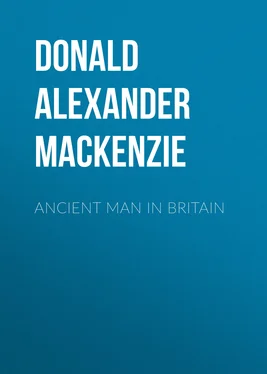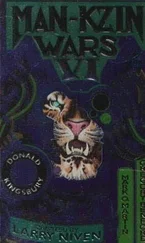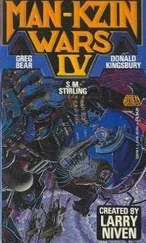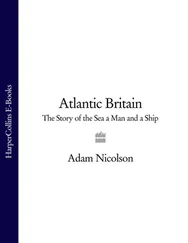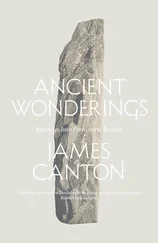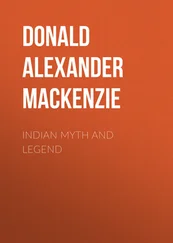Donald Alexander Mackenzie - Ancient Man in Britain
Здесь есть возможность читать онлайн «Donald Alexander Mackenzie - Ancient Man in Britain» — ознакомительный отрывок электронной книги совершенно бесплатно, а после прочтения отрывка купить полную версию. В некоторых случаях можно слушать аудио, скачать через торрент в формате fb2 и присутствует краткое содержание. Жанр: foreign_prose, История, Биология, foreign_edu, foreign_antique, на английском языке. Описание произведения, (предисловие) а так же отзывы посетителей доступны на портале библиотеки ЛибКат.
- Название:Ancient Man in Britain
- Автор:
- Жанр:
- Год:неизвестен
- ISBN:нет данных
- Рейтинг книги:3 / 5. Голосов: 1
-
Избранное:Добавить в избранное
- Отзывы:
-
Ваша оценка:
- 60
- 1
- 2
- 3
- 4
- 5
Ancient Man in Britain: краткое содержание, описание и аннотация
Предлагаем к чтению аннотацию, описание, краткое содержание или предисловие (зависит от того, что написал сам автор книги «Ancient Man in Britain»). Если вы не нашли необходимую информацию о книге — напишите в комментариях, мы постараемся отыскать её.
Ancient Man in Britain — читать онлайн ознакомительный отрывок
Ниже представлен текст книги, разбитый по страницам. Система сохранения места последней прочитанной страницы, позволяет с удобством читать онлайн бесплатно книгу «Ancient Man in Britain», без необходимости каждый раз заново искать на чём Вы остановились. Поставьте закладку, и сможете в любой момент перейти на страницу, на которой закончили чтение.
Интервал:
Закладка:
This type of head—known as the "disharmonic", because a broad face is usually a characteristic of a broad skull, and a long face of a long skull—has been found to be fairly common among the modern inhabitants of the Dordogne valley. These French descendants of the Crô-Magnons are, however, short and "stocky", and most of them have dark hair and eyes. Crô-Magnon types have likewise been identified among the Berbers of North Africa, and the extinct fair-haired Guanches of the Canary Islands, in Brittany, on the islands of northern Holland, and in the British Isles. 12 12 For principal references see The Races of Europe , W. Z. Ripley, pp. 172 et seq. , and The Anthropological History of Europe , John Beddoe (Rhind lectures for 1891; revised edition, 1912), p. 47.
A comparatively short race, sometimes referred to as the "Combe-Capelle", after the rock-shelter at Combe-Capelle, near Montferrand, Perigord, was also active during the stage of Aurignacian culture. An adult skeleton found in this shelter was that of a man only 5 feet 3 inches in height. The skull is long and narrow, with a lofty forehead, and the chin small and well developed. It has some similarity to modern European skulls. The skeleton had been subjected for thousands of years to the dripping of water saturated with lime, and had consequently been well preserved. Near the head and neck lay a large number of perforated marine shells ( Littorina and Nassa ). A collection of finely-worked flints of early Aurignacian type also lay beside the body.
Reference may also be made here to the finds in Moravia. Fragmentary skull caps from Brüx and Brünn are regarded as evidence of a race which differed from the tall Crô-Magnons, and had closer affinities with Combe-Capelle man. Some incline to connect the Brünn type with England, the link being provided by a skeleton called the "Galley Hill" after the place of its discovery below Gravesend and near Northfleet in Kent. Scientists regard him as a contemporary of the Aurignacian flint-workers of Combe-Capelle and Brünn. "Both the Brüx and Brünn skulls", writes Professor Osborn, "are harmonic; they do not present the very broad, high cheek-bones characteristic of the Crô-Magnon race, 13 13 That is, the tall representatives of the Crô-Magnon races.
the face being of a narrow modern type, but not very long. There is a possibility that the Brünn race was ancestral to several later dolichocephalic groups which are found in the region of the Danube and of middle and southern Germany." 14 14 Men of the Old Stone Age , pp. 335-6.
The Galley Hill man had been buried in the gravels of the "high terrace", 90 feet above the Thames. His bones when found were much decayed and denuded, and the skull contorted. The somewhat worn "wisdom tooth" indicates that he was a "fully-grown adult, though probably not an aged individual". Those who think he was not as old as the flints and the bones of extinct animals found in the gravels, regard him as a pioneer of the Brünn branch of the Aurignacians.
The Piltdown skull appears to date back to a period vastly more ancient than Neanderthal times.
Our special interest in the story of early man in Britain is with the "Red Man" of Paviland and Galley Hill man, because these were representatives of the species to which we ourselves belong. The Neanderthals and pre-Neanderthals, who have left their Eoliths and Palæoliths in our gravels, vanished like the glaciers and the icebergs, and have left, as has been indicated, no descendants in our midst. Our history begins with the arrival of the Crô-Magnon races, who were followed in time by other peoples to whom Europe offered attractions during the period of the great thaw, when the ice-cap was shrinking towards the north, and the flooded rivers were forming the beds on which they now flow.
We have little to learn from Galley Hill man. His geological horizon is uncertain, but the balance of the available evidence tends to show he was a pioneer of the medium-sized hunters who entered Europe from the east, during the Aurignacian stage of culture. It is otherwise with the "Red Man" of Wales. We know definitely what particular family he belonged to; he was a representative of the tall variety of Crô-Magnons. We know too that those who loved him, and laid his lifeless body in the Paviland Cave, had introduced into Europe the germs of a culture that had been radiated from some centre, probably in the ancient forest land to the east of the Nile, along the North African coast at a time when it jutted far out into the Mediterranean and the Sahara was a grassy plain.
The Crô-Magnons were no mere savages who lived the life of animals and concerned themselves merely with their material needs. They appear to have been a people of active, inventive, and inquiring minds, with a social organization and a body of definite beliefs, which found expression in their art and in their burial customs. The "Red Man" was so called by the archæologists because his bones and the earth beside them were stained, as has been noted, by "red micaceous oxide of iron". Here we meet with an ancient custom of high significance. It was not the case, as some have suggested, that the skeleton was coloured after the flesh had decayed. There was no indication when the human remains were discovered that the grave had been disturbed after the corpse was laid in it. The fact that the earth as well as the bones retained the coloration affords clear proof that the corpse had been smeared over with red earth which, after the flesh had decayed, fell on the skeleton and the earth and gravel beside it. But why, it will be asked, was the corpse so treated? Did the Crô-Magnons paint their bodies during life, as do the Australians, the Red Indians, and others, to provide "a substitute for clothing"? That cannot be the reason. They could not have concerned themselves about a "substitute" for something they did not possess. In France, the Crô-Magnons have left pictorial records of their activities and interests in their caves and other shelters. Bas reliefs on boulders within a shelter at Laussel show that they did not wear clothing during the Aurignacian epoch which continued for many long centuries. We know too that the Australians and Indians painted their bodies for religious and magical purposes—to protect themselves in battle or enable them to perform their mysteries—rain-getting, food-getting, and other ceremonies. The ancient Egyptians painted their gods to "make them healthy". Prolonged good health was immortality.
The evidence afforded by the Paviland and other Crô-Magnon burials indicates that the red colour was freshly applied before the dead was laid in the sepulchre. No doubt it was intended to serve a definite purpose, that it was an expression of a system of beliefs regarding life and the hereafter.
Apparently among the Crô-Magnons the belief was already prevalent that the "blood is the life". The loss of life appeared to them to be due to the loss of the red vitalizing fluid which flowed in the veins. Strong men who received wounds in conflict with their fellows, or with wild animals, were seen to faint and die in consequence of profuse bleeding; and those who were stricken with sickness grew ashen pale because, as it seemed, the supply of blood was insufficient, a condition they may have accounted for, as did the Babylonians of a later period, by conceiving that demons entered the body and devoured the flesh and blood. It is not too much to suppose that they feared death, and that like other Pagan religions of antiquity theirs was deeply concerned with the problem of how to restore and prolong life. Their medicine-men appear to have arrived at the conclusion that the active principle in blood was the substance that coloured it, and they identified this substance with red earth. If cheeks grew pale in sickness, the flush of health seemed to be restored by the application of a red face paint. The patient did not invariably regain strength, but when he did, the recovery was in all likelihood attributed to the influence of the blood substitute. Rest and slumber were required, as experience showed, to work the cure. When death took place, it seemed to be a deeper and more prolonged slumber, and the whole body was smeared over with the vitalizing blood substitute so that, when the spell of weakness had passed away, the sleeper might awaken, and come forth again with renewed strength from the cave-house in which he had been laid.
Читать дальшеИнтервал:
Закладка:
Похожие книги на «Ancient Man in Britain»
Представляем Вашему вниманию похожие книги на «Ancient Man in Britain» списком для выбора. Мы отобрали схожую по названию и смыслу литературу в надежде предоставить читателям больше вариантов отыскать новые, интересные, ещё непрочитанные произведения.
Обсуждение, отзывы о книге «Ancient Man in Britain» и просто собственные мнения читателей. Оставьте ваши комментарии, напишите, что Вы думаете о произведении, его смысле или главных героях. Укажите что конкретно понравилось, а что нет, и почему Вы так считаете.
